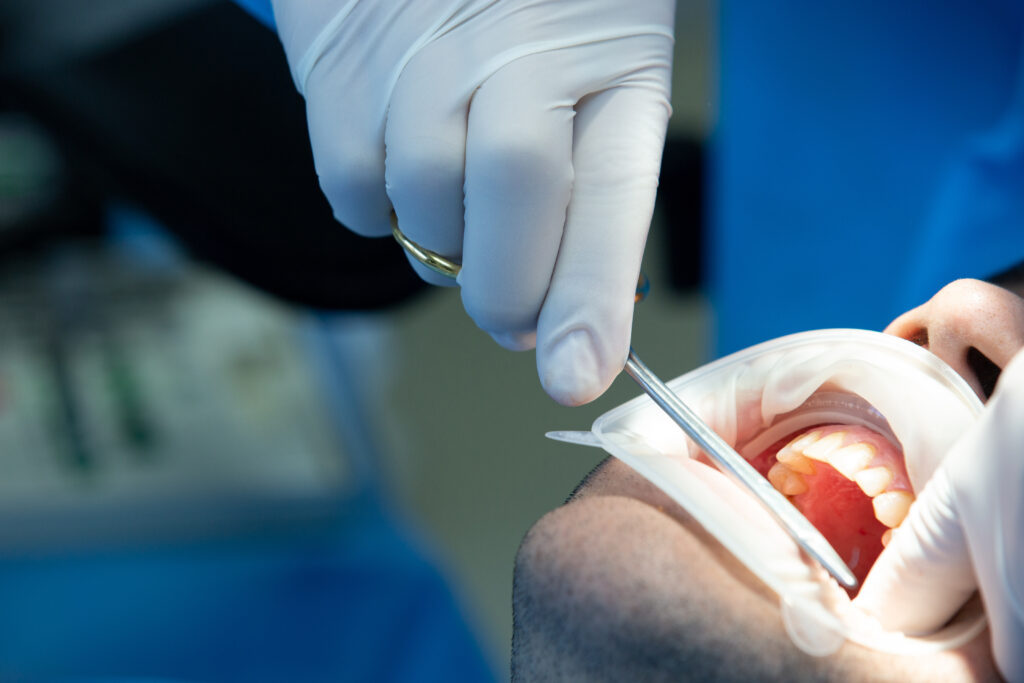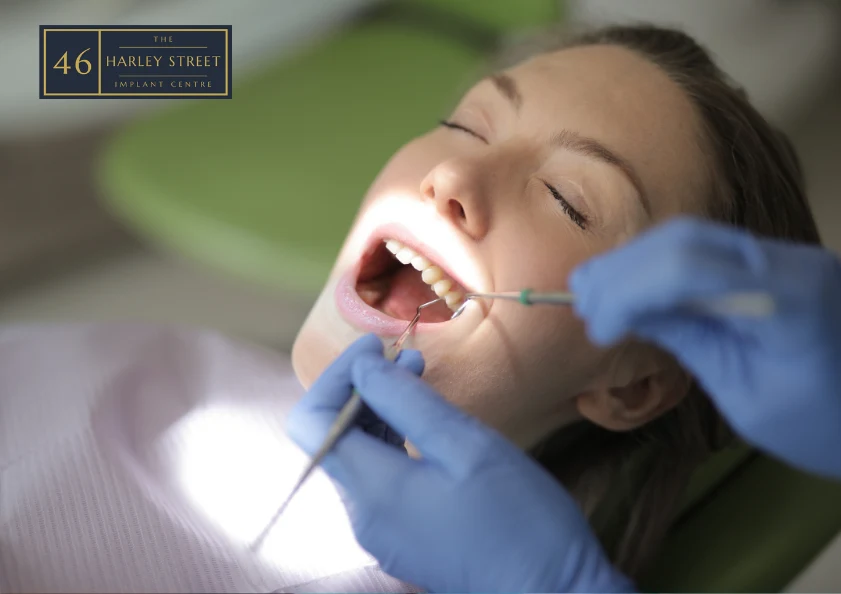Wisdom Tooth Removal Cost UK. A Complete Guide Wisdom teeth are the last molars to appear in the mouth, usually developing between …
Non-Surgical Wisdom Tooth Extraction: A Less Invasive Alternative to Surgery
What is non-surgical wisdom tooth extraction and how does it compare to surgical extraction? Your wisdom teeth are the teeth that can develop at the back of your mouth, usually between the ages of 18-24. Whilst everyone has 4 wisdom teeth (two in the upper jaw and two in the lower jaw) not everyone’s wisdom teeth will break through the jaw bone. Indeed, around 80% of people will have at least 1 wisdom tooth that remains embedded in the gums throughout their lives.
Wisdom teeth were important for our ancestors who typically ate a diet of more rough and coarse food. However, throughout evolution, the human jaw has become smaller, reducing the space for your wisdom teeth.
Wisdom teeth often do not cause any problems. However, due to the limited space at the back of the mouth, some individuals may develop pain and inflammation of the gums, or damage to surrounding teeth.
When problems arise, extraction may be necessary. There are two options for wisdom tooth extraction: surgical and non-surgical wisdom tooth extraction. This blog will delve into what wisdom teeth are, the potential issues they can cause, the symptoms indicating the need for extraction, and the comparative benefits and risks of surgical versus non-surgical extraction.

What type of problems can you get with your wisdom teeth?
When wisdom teeth do not have enough room to develop (erupt) normally, there can be several potential complications. These include:
Impaction: this is when a tooth is trapped in the jawbone. It can be “fully” or “partially” impacted owing to lack of space. This may lead to symptoms of pain and swelling.
Crowding: whenever wisdom teeth erupt into a zone with little space, they may push against existing teeth, causing them to become misaligned or crowded. This can lead to problems with hygiene, dental caries and problems with eating.
Decay and gum disease: being located at the back of mouth, your wisdom teeth are often quite difficult to clean properly. This may increase the risk of dental caries and gum disease.
Cysts and tumours: very rarely, impacted wisdom teeth can cause cysts (fluid filled pockets which are prone to infection, or tumours.
Symptoms indicating problems with your wisdom teeth
Problems with your wisdom teeth can manifest in a number of different ways. These include:
Pain and swelling
Infection of the gums: red, swollen, hot or bleeding gums around the wisdom teeth.
Problems opening the mouth (trismus): often there is stiffness or pain in the jaw that can limit its range of motion.
Bad breath: if your wisdom tooth is partially erupted, this can lead to food or bacteria being trapped at the back of your mouth. This can cause problems with bad breath.
Ways to manage troublesome wisdom teeth
There are broadly two methods that impacted wisdom teeth can be managed: surgical or non-surgical management. Whilst this blog focuses mostly on surgical management, some examples of non-surgical management include:
Managing infection with antibiotics
Regular mouth rinses with antibacterial washes or salt water
Pain relief
These methods can be useful to manage some symptoms, but more definitive management is in the form of extraction.
Types of wisdom tooth extraction
The two types of wisdom tooth extraction are surgical extraction and non-surgical extraction.
Non-surgical extraction: This procedure is suitable for fully erupted and not impacted wisdom teeth that are causing problems such as decay or crowding. It involves loosening the tooth in its socket and then removing it with forceps. It usually only involves local anaesthetic injected into the gums.
Surgical extraction: Required for impacted or partially erupted wisdom teeth. The procedure involves making an incision in the gum, removing any bone obstructing the tooth, and extracting the tooth, sometimes in various different pieces. This is managed via local anaesthesia +/- sedation.
Surgical vs Non-Surgical wisdom tooth extraction
Non-surgical extraction is less invasive, quicker and will have a higher recovery time. It may also have a lower risk of complications like infection or dry socket when compared to surgical extraction. However, it is limited to certain cases when the wisdom tooth is fully erupted, and there is no evidence of impaction. There is also a risk of breaking the teeth during the extraction, which may require further surgical extraction.
On the other hand, surgical extraction ensures the complete removal of the tooth which may reduce the risk of infection, ongoing inflammation and pain. However, it is a more invasive procedure that involves incisions into the gums, which may increase recovery time.
Conclusion
Managing wisdom teeth problems effectively requires a combination of preventive care, timely intervention, and appropriate management. When issues arise, non-surgical and surgical interventions can address the problem based on position of the tooth, whether it is fully or partially erupted, and its’ degree of impaction. Each individual will have different needs when it comes to treatment, and consulting with your dentist about the best option is advised. At The Harley Street Implant Centre, Dr James is on the specialty registrar for Oral and Maxillofacial surgery, meaning he has extensive experience in advanced and complex surgical tooth extraction. Contact us now for more information.
IV Sedation Myths : 3 Of The Most Common Myths Debunked
For many patients, the most difficult part of getting dental implants is not the surgery itself but making the decision to seek …
Non Surgical Wisdom Tooth Extraction Recovery
Non Surgical Wisdom Tooth Extraction Recovery: A Harley Street Guide Recovering from a non-surgical wisdom tooth extraction is usually straightforward, but knowing …
Why We Built a High-End Dental Implant Clinic from Day One, And Why It Matters for Your Care
When people hear that we built a high end dental implant clinic on Harley Street, the first question they often ask is …



